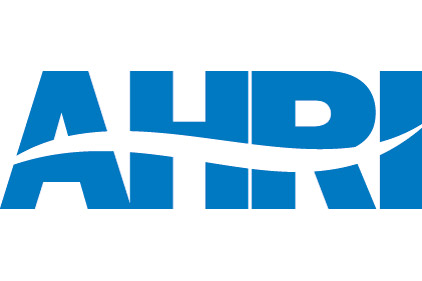 The Air-Conditioning, Heating and Refrigeration Technology Institute (AHRTI) has completed a research project on performance standards for walk-in refrigerator and freezer systems.
The Air-Conditioning, Heating and Refrigeration Technology Institute (AHRTI) has completed a research project on performance standards for walk-in refrigerator and freezer systems.According to a statement from the Air-Conditioning, Heating, and Refrigeration Institute (AHRI), the project “culminates an extensive investigation of walk-in cooler and freezer refrigeration load profiles and refrigeration system performance as a function of the ambient drybulb and wetbulb temperatures surrounding the walk-in and its condensing unit.”
AHRTI Report No. 09002-01 was issued in January 2012 and authored by Bryan R. Becker, Ph.D., P.E., Brian A. Fricke, Ph.D., and Bryan C. Sartin of BECO Becker Engineering Co., of Blue Springs, Mo.
The authors said the objective of the project was to “substantiate and provide support” for AHRI Standard 1250/1251, Standard for Performance Rating of Walk-In Coolers and Freezers (AHRI 2009b, 2009c).
The investigation included literature review, analysis of model load profiles, analysis of monitored data from field sites, review and selection of modeling tools, validation of eQuest model, eQuest simulations of walk-in cooler and freezer performance, and analysis of simulation results.
According to the report, the most important findings of this project include:
• “The AWEF (Annual Walk-In Efficiency Factor) generally increases with increasing compressor run time and with decreasing average ambient temperature. However, the behavior of a walk-in system is further complicated because a reduced average ambient temperature usually results in a reduced compressor run time. The evaporator fan energy consumption and heating effect during compressor off cycles is a major contributor to the relationship between compressor run time and AWEF.”
• “In general, the AHRI load profile agrees well with load profiles reported by other researchers. However, a few discrepancies exist in the AHRI load profile, including less door area for large walk-in coolers/freezers, absence of crack infiltration, and higher product loading for small walk-ins.”
• “The small AHRI cooler load correlates well with measured data from small in-service walk-in coolers, while there is less agreement between the large AHRI cooler and measured data for large in-service coolers. The loads for the AHRI small and large freezers are considerably less than the measured data from a limited sample of in-service walk-in freezers.”
• “Comparison of simulated climate zone AWEF’s versus simulated AHRI 1250/1251 method-of-test AWEF’s for walk-in freezers shows very good agreement. However, significant differences exist between the simulated climate zone AWEF’s and the simulated AHRI 1250/1251 method-of-test AWEF’s for walk-in coolers due to load profile assumptions.”
For more information, go to www.ahrinet.org.
Publication date: 04/23/2012


Report Abusive Comment